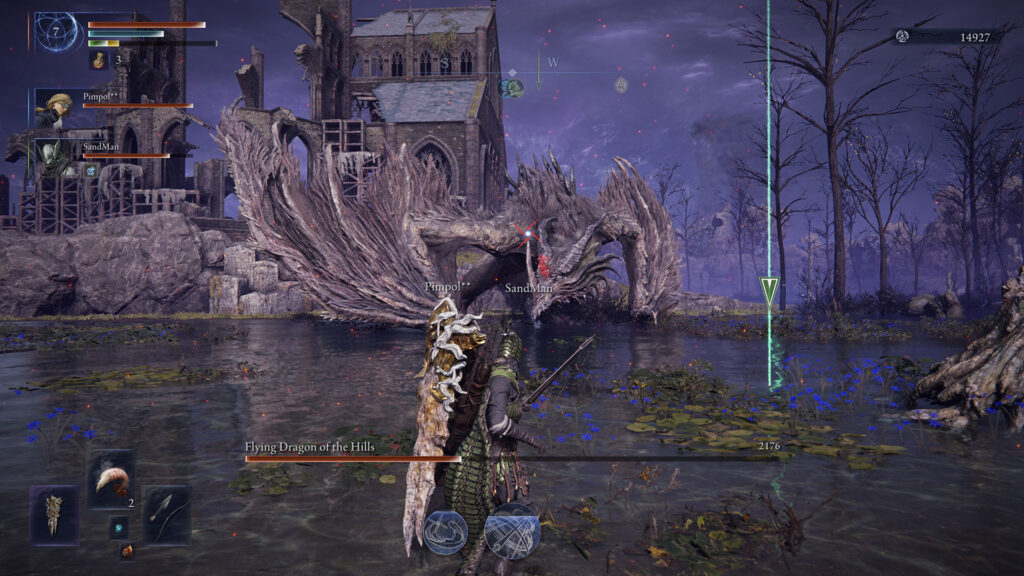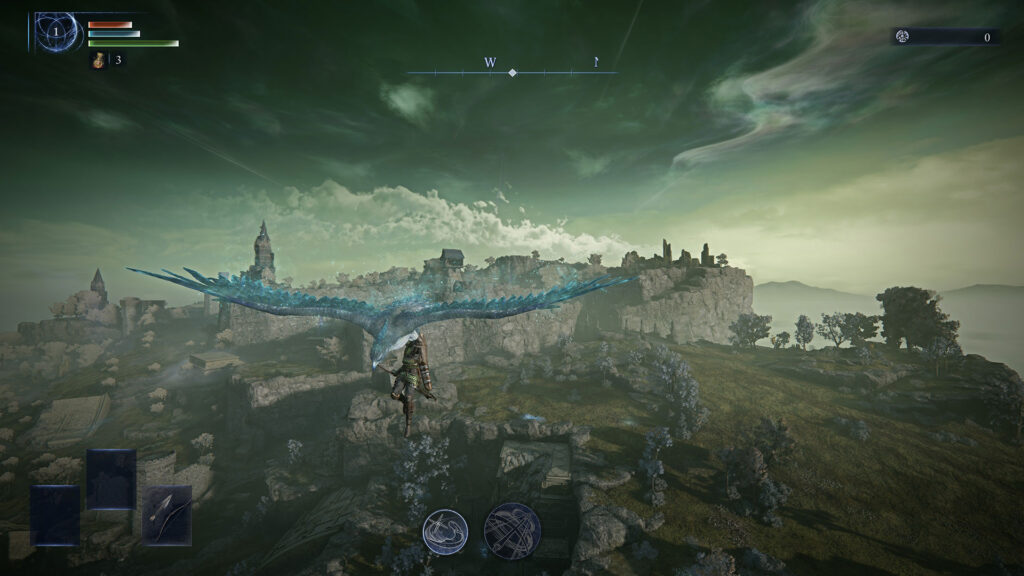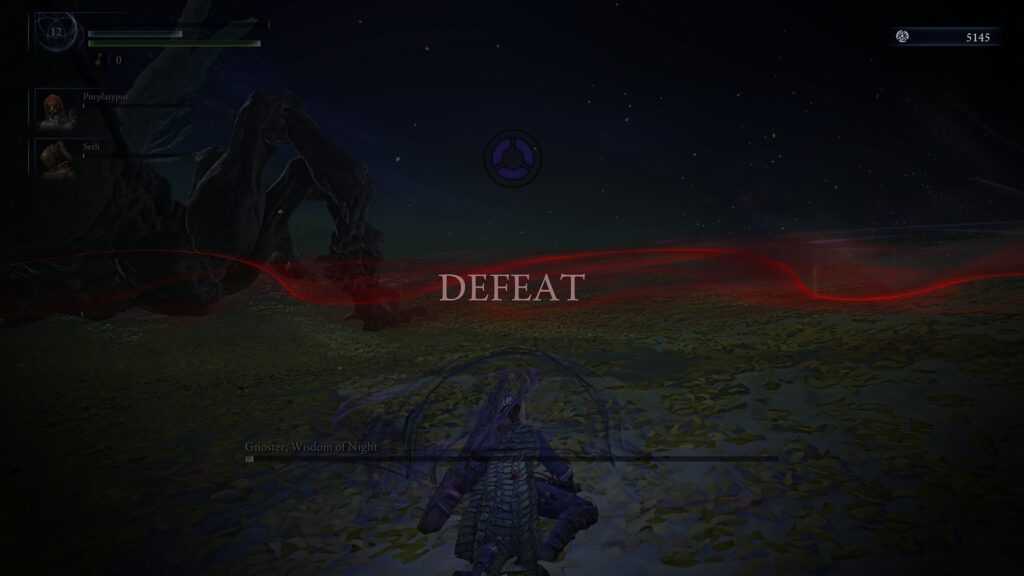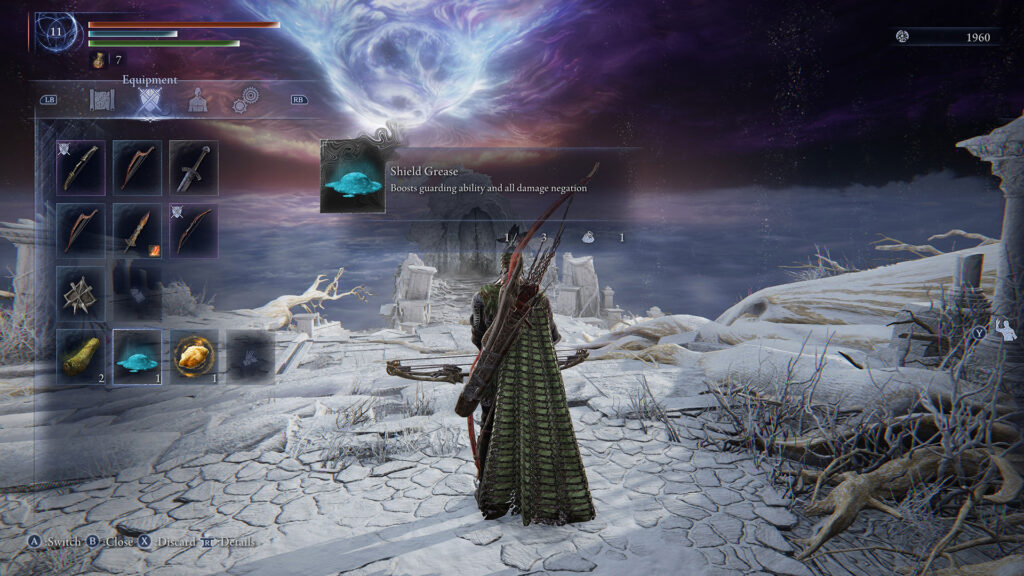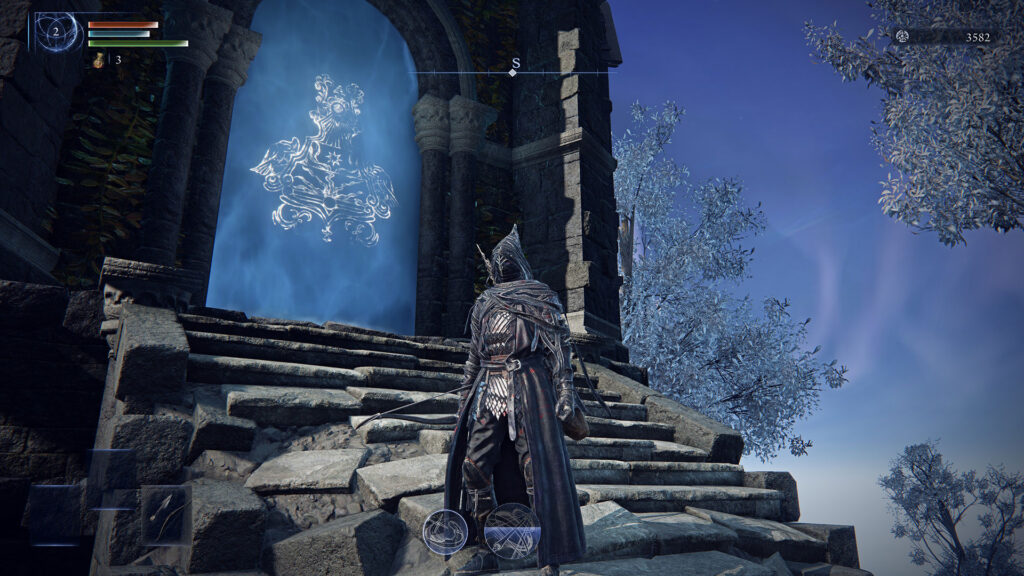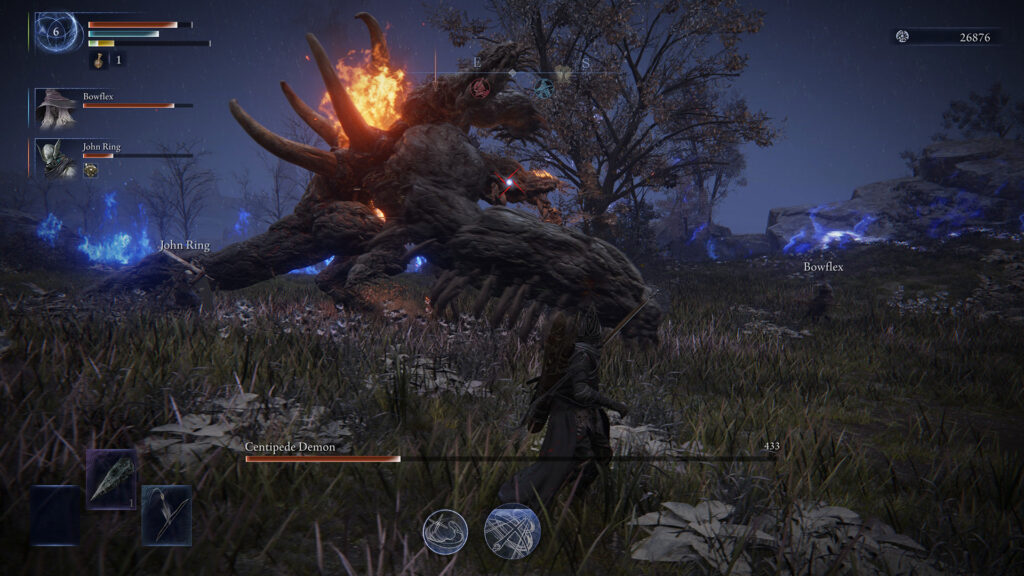Quick Verdict
Elden Ring Nightreign was always going to be an interesting game for me to review. I’m not a soulslike fan and definitely would not consider myself an expert on Elden Ring, despite having played it for close to 40 hours. I find FromSoftware’s slower-paced combat a bit clunky and lack the patience needed for it to really click with me. When the first previews of Elden Ring Nightreign released, the faster-paced combat intrigued me, and I hoped the experience would feel similar to Monster Hunter.
What I ended up with is one of my favorite co-op games ever, one I want to keep playing repeatedly, no matter how many unsuccessful runs I have. The enjoyment of the game is very dependent on whether or not you have friends to play with, but I’ve had some random groups that fared very well. While that part is a mixed bag, when everything goes smoothly, Elden Ring Nightreign is by far one of the most fun experiences I’ve ever had—and this comes from someone who doesn’t really enjoy Elden Ring.
Fast and Furious

My experience with FromSoftware games includes about 10 hours of the original Demon’s Souls on PlayStation 3, roughly five hours of Bloodborne, a complete playthrough of Armored Core VI: Fires of Rubicon, and nearly 40 hours of Elden Ring. Try as I might, the slow-paced combat from soulslike games just never appealed to me. I lack the patience to dodge, block, or parry my way to victory as I tend to be a fairly aggressive player and typically gravitate towards glass cannon builds to maximize damage. Armored Core VI: Fires of Rubicon’s faster-paced combat showed me that my issue wasn’t FromSoftware’s core gameplay design of difficult boss battles, but rather the slower nature of its other titles. I believe I gave Elden Ring a fair shot, trying multiple different builds, but I was never engaged enough with the game’s combat to ever complete the adventure.
As a result, you’re better off looking elsewhere if you need a review that compares the core differences of Elden Ring to Elden Ring Nightreign. I’m far from an expert on precisely how the gameplay differs between the two games; I just know I enjoy Elden Ring Nightreign significantly more. The faster-paced combat combined with streamlined inventory management and one-button leveling trims away all the fat I disliked about Elden Ring. I’m also fortunate enough to have others to play with, some of whom I’ve spent decades trading insults and yelling at each other for being awful.
What makes Elden Ring Nightreign work for me is knowing that even if I’m focused solely on survival, my teammates are still dishing out damage. I understand that one of the major reasons soulslikes are appealing is finding that window of opportunity to attack, but I just never found it particularly fun. With two other people, though, each player has an active role depending on who currently has the boss’s attention. It’s a genuinely enjoyable dynamic that I never expected from a soulslike game.
Ring Leaders

Elden Ring Nightreign is first and foremost a three-player co-op experience, though you can undertake expeditions solo. FromSoftware is already looking at ways to make single player a bit more manageable, but by and large, the game is clearly balanced for three players. Unfortunately, there’s no option to queue with just two people, though if a third person drops out, you can continue as a duo. I mostly used single player as a way to understand the mechanics of the game without having to worry about ruining other people’s experiences. While the start can feel daunting, especially for newcomers, it doesn’t take long before everything clicks.
The game is strictly PvE, dropping players into Limveld, a region set within the same universe as Elden Ring’s Lands Between. If you’ve spent time in Elden Ring, you’ll definitely recognize familiar sights, but as you’d expect, the map is significantly smaller and more manageable than Elden Ring’s open world. Each run takes around 40 minutes if you’re successful and is broken up into a three-day cycle. During the day, players are free to roam around the map, clearing enemies, gaining Runes, finding weapons, additional Flask charges, and more. As night approaches, a circle shrinks down into an area of the map, pushing players towards the boss zone. If you’re caught outside the circle as it moves, you’ll repeatedly take damage. Anyone familiar with battle royale games will immediately understand this mechanic.
Successfully beating the boss on the first night allows players to repeat the cycle on day two. The entire map area is accessible once again, but camps will not respawn. If your group manages to beat the boss on the second night, you’ll all proceed to a separate area to prepare for battle against the Night Lord. That area offers a vendor, an opportunity to upgrade your gear, and a site of Grace to level up. After that, you proceed directly to the boss chamber, effectively ending exploration once night two concludes.
Souls Sprint

That is a very basic breakdown of the core gameplay loop of each run, but obviously there’s a lot more depth to it. Things are randomized on the map each run, which means it’s really important to have someone who can quickly read the map and continually plot a course for the entire group. The most successful runs I had featured one leader showing the way, and the other two following. While splitting up is entirely possible, it’s really only advisable if you have a group of all pros. The reason is that you’ll want to be nearby when mini-bosses (or Great Enemies) are defeated, so you can choose one of three upgrades. These upgrades are crucial in strengthening your character to make the nightly boss battles more manageable. Defeating nightly bosses rewards Dormant Powers, which are more powerful abilities.
Like combat in soulslike games, choosing your route on the map is all about risk and reward. The safe bet is to take out easy trash mobs for guaranteed Runes to slowly level, but skipping mini-bosses means you’re missing out on passive upgrades. Equipment can be found throughout the world in chests, but higher rarity weapons generally come from defeating mini-bosses. You can also use the vendor to upgrade your starting weapon to Rare, and a trip to the mines guarantees an upgrade to Epic if you happen to get unlucky with weapon drops.
In our successful runs, we balanced collecting additional Flask charges with making an early stop at the mines to quickly upgrade our starting weapons to Epic. This made it a lot easier to dispatch mini-bosses throughout the map, skipping trash as much as we could. It makes for a very fast-paced sprint through the map, because you are ultimately racing against the clock. The more enemies you kill before nightfall, the faster you’ll level up, and leveling up is crucial unless you’re exceptionally skilled.
Rune Race

Of course, all of this is dependent on not dying repeatedly. Since this is a soulslike, that’s easier said than done. Anytime someone dies in Elden Ring Nightreign, they can be resurrected by their teammates by being attacked. On their first death, players have one segment that needs to be attacked to resurrect them. Each subsequent death adds another segment to a maximum of three. During the day, there’s a time limit to be resurrected, but there isn’t a time limit during nightly boss fights or the Night Lord. If a player isn’t resurrected during the day, they’ll respawn and lose one level. Repeated deaths afterward won’t cause additional level loss until the player levels up again. This is clear to the player, as their level will remain red until they level up again, at which point, they can lose a level again.
Since enemy health never refills, going back to a mini-boss after dying is a viable strategy, especially since you’ll have to retrieve the Runes that were dropped when you died. Like Elden Ring, the punishment for death is dropping your Runes, which is basically the main currency of the game that is used to shop and level up. Making a quick trip back to retrieve your Runes is almost always worthwhile since dropped Runes aren’t persistent across multiple deaths. For example, if you held 500 Runes and died, running back to the marker will get you back those 500 Runes. However, if you held 500 Runes, died, and then died again before picking up your 500 Runes, your new death site will have whatever amount of Runes you held on that second death, even if it’s 0. So remember, if you died because of the shrinking circle heading into the night, you can always go back and retrieve the runes after beating the boss. Since there’s no time limit to getting resurrected during nightly Boss battles, there won’t be a new death site to overwrite your previous one.
By far, most of my smoothest runs fell apart if a player continually died during a boss fight. While the first resurrection is typically very easy to pull off, the second and third ones get tricky because of the amount of damage that needs to be done. Certain classes have ways to quickly resurrect through their Ultimate skills, and sometimes those are best saved for near-wipes. I particularly enjoyed how strategies instantly shifted when a party member fell in battle, highlighting the importance of coordination and communication. Unfortunately, Elden Ring Nightreign doesn’t support voice chat, for better or worse. It’s another reason why the game’s best enjoyed with friends you can yell at.
Night’s Watch

Speaking of skills, there are a total of eight classes called Nightfarers in Elden Ring Nightreign. Six are available from the start, while two need to be unlocked. The six base classes are Wylder, Guardian, Ironeye, Raider, Recluse, and Executor, while the two unlockable classes are Duchess and Revenant. Unlocking the Duchess requires getting a random drop, while the Revenant requires purchasing an item from the Small Jar Bazaar and beating her in combat. As expected, each Nightfarer has their own archetype that leans into personal playstyle, but keep in mind, any Nightfarer can equip any weapon in Elden Ring Nightreign. I’ve been grouped with players that excelled at switching to range or melee when necessary, so sometimes choosing might come down to the skills you want access to.
Each class has two skills available on cooldown, one of which is an Ultimate with a significantly longer cooldown. Weapons can also have skills attached to them, but that’s more variable and applies to any class. Initially, The Duchess appealed to me with her fast movement and double dash, but considering I almost always play a ranged class in all my games, The Ironeye quickly became my class of choice. I’ve seen advantages and disadvantages to each class, but like Monster Hunter, the best advice I have is to pick the class that resonates with you. After all, the best DPS is being alive and staying alive relies on playing your class comfortably.
Your character can also be customized through relics, which grant passive upgrades at the start of each run. The system is rather basic: you simply match each relic to an available slot based on its color. Each class starts with a combination of three, but the Small Jar Bazaar sells an additional color combination for each class. A total of three properties can roll on each relic, and those range anywhere from base stat increases (Dex +1) to granting your starting armament (weapon) with an element type like Fire. Relics are rewarded after each run, but a random one can be purchased using the currency that is gained from each run. These are randomly rolled and serve as long-term meta-progression for each class. The Small Jar Bazaar sells some starter Relics with predefined stats, but you’ll mostly roll random Relics in hopes of getting what you want. There are also outfits for each class that can be purchased using the same currency as Relics.
Dying to Play Again

My biggest criticism about the game is its performance and lack of settings on the PC version. I’m not sure why FromSoftware continually gets a pass on this; if Ubisoft, for instance, released Elden Ring Nightreign with this kind of performance, I feel it would have received a much harsher reception than it currently has. You can see the specs of my gaming PC here, minus the addition of a recent MSI RTX 5090 Gaming Trio OC graphics card. It was shocking that Elden Ring Nightreign, despite being capped at 60 FPS, struggled to run smoothly on my PC. I followed FromSoftware’s recommendations, lowering resolution from 4K down to 1440p and even 1080p, and reducing graphics settings all the way to Low. I updated and rolled back NVIDIA drivers, but I would constantly have stuttering and frame rate drops, all the way to the teens in the Night Lord’s arena. This really marred my experience with the game, because I knew I found it really fun, but it was so terrible to play. I ultimately had to turn off multithreading in UEFI to get the game to run smoothly at 4K and 60 FPS, but this is inexcusable. Elden Ring Nightreign is clearly built off Elden Ring’s foundations, and FromSoftware has had more than enough time to figure out these performance issues. The company has historically launched unoptimized games, yet the general media and players continually give them a pass. In fact, one of my biggest issues with Elden Ring was the stuttering on the PlayStation 5 version.
That being said, once I figured out my performance issues and got 60 FPS stable, I couldn’t stop playing. If you’re fortunate enough to not run into any performance issues with your setup, and you’ve got a pair of friends to play with, Elden Ring Nightreign really is a blast and offers a co-op experience like no other. Playing with randoms doesn’t ruin the experience entirely, but a bad group can definitely make a run feel like a waste of time. If you approach each run with the mindset of improving as a player rather than expecting success, playing with randoms won’t entirely ruin your sanity.
As someone who is not an Elden Ring fan at all, I’m genuinely surprised by how Elden Ring Nightreign has sunk its teeth into me. It’s been a long while since I’ve been able to play a co-op game and just say “one more run” time and time again, to the point where I’m wondering where the days and nights have gone since the game went live on Thursday, May 29 at 3:00 PM Pacific. There’s a level of strategic decision making with others that really appeals to me. Surprisingly, my biggest hope is for additional expeditions, as the current variety of Night Lords leaves me wanting more. There are a few ingredients that must come together before the Elden Ring Nightreign recipe fully succeeds, but when it does, nothing tastes better.
Elden Ring Nightreign has a scheduled release date of May 30, 2025, for PlayStation 4, PlayStation 5, Xbox Series X|S, and PC. This review is based on a purchased retail copy of the game on PC. While FullCleared does have affiliate partnerships, they do not influence our editorial content. We may, however, earn commissions for products purchased via affiliate links.











